Customer Service (CS) Champs

Overview
Customer Service Training (Etiquette) – eLearning
A mobile-friendly Articulate Rise concept course designed to help ABC Corp employees improve customer service outcomes. This course implements Action Mapping, Adult Learning Theory, and Gagne’s 9 Events of Learning to deliver short scenarios, interactive concept checks, and multimedia.
Audience – adult sales and customer-facing employees at ABC Corp,
Responsibilities – instructional design, eLearning design, script writing, scenario scriptwriting, evaluations, and assessments
Tools used – Articulate Rise, Adobe Creative Cloud, Powerpoint, Mindmeister, Vegas Movie Studio, Camtasia
Solution
I designed and developed this 15-20 minute interactive eLearning course to allow learners to practice the behaviors needed to see improved customer service feedback and sales results for the company. As such, it is based on adult learning theory and includes elements of ACTION MAPPING in its scenario implementation. As a mobile-friendly Rise course, it is lightweight and accessible to audiences in a variety of learning environments.
Process
The course design took place over a 3-month period in my graduate program in Instructional Technology. As such, it incorporates a strong theoretical and design foundation, particularly ADDIE and Gagne’s 9 events of learning.
The course also prioritizes assessments and evaluations, both formative and summative. Articulate Rise is somewhat modest in its power and depth, but its strength lies in its straightforward accessibility and ease of modification.
This course is a concept course on which I plan to continue building and adding elements to more fully address the learning objectives (“business problem” in this case).
Having graduate course requirements to adhere to obligated me to be meticulous and intentional with my module content and design, while exploring the functionality and UI of Rise in this learning context.
Action Map
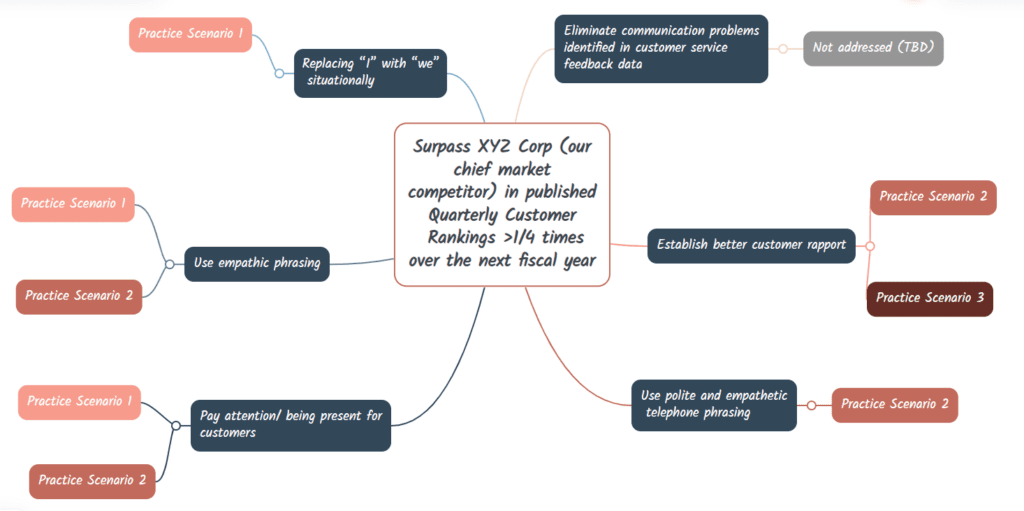
Text-Based Storyboard

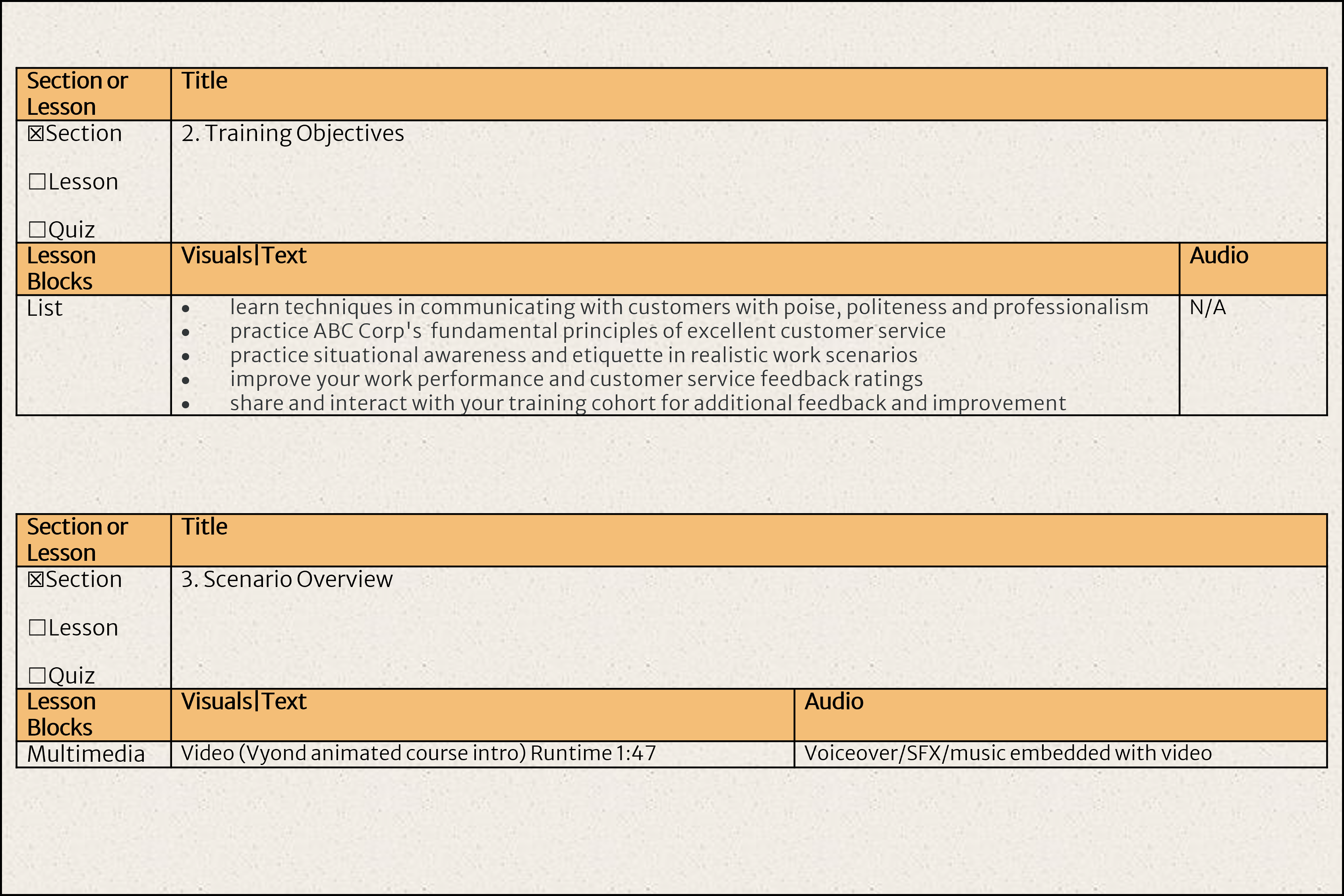

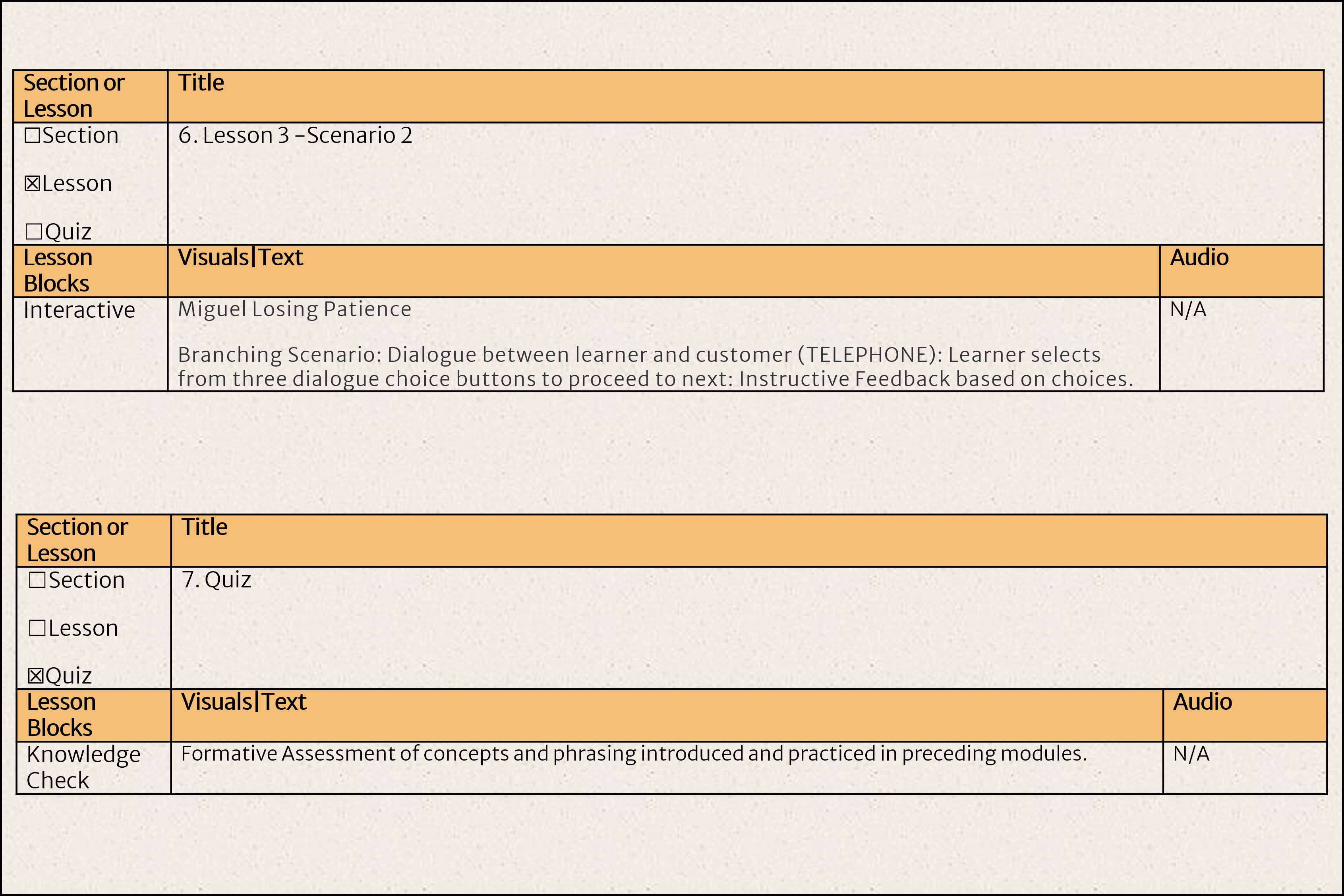
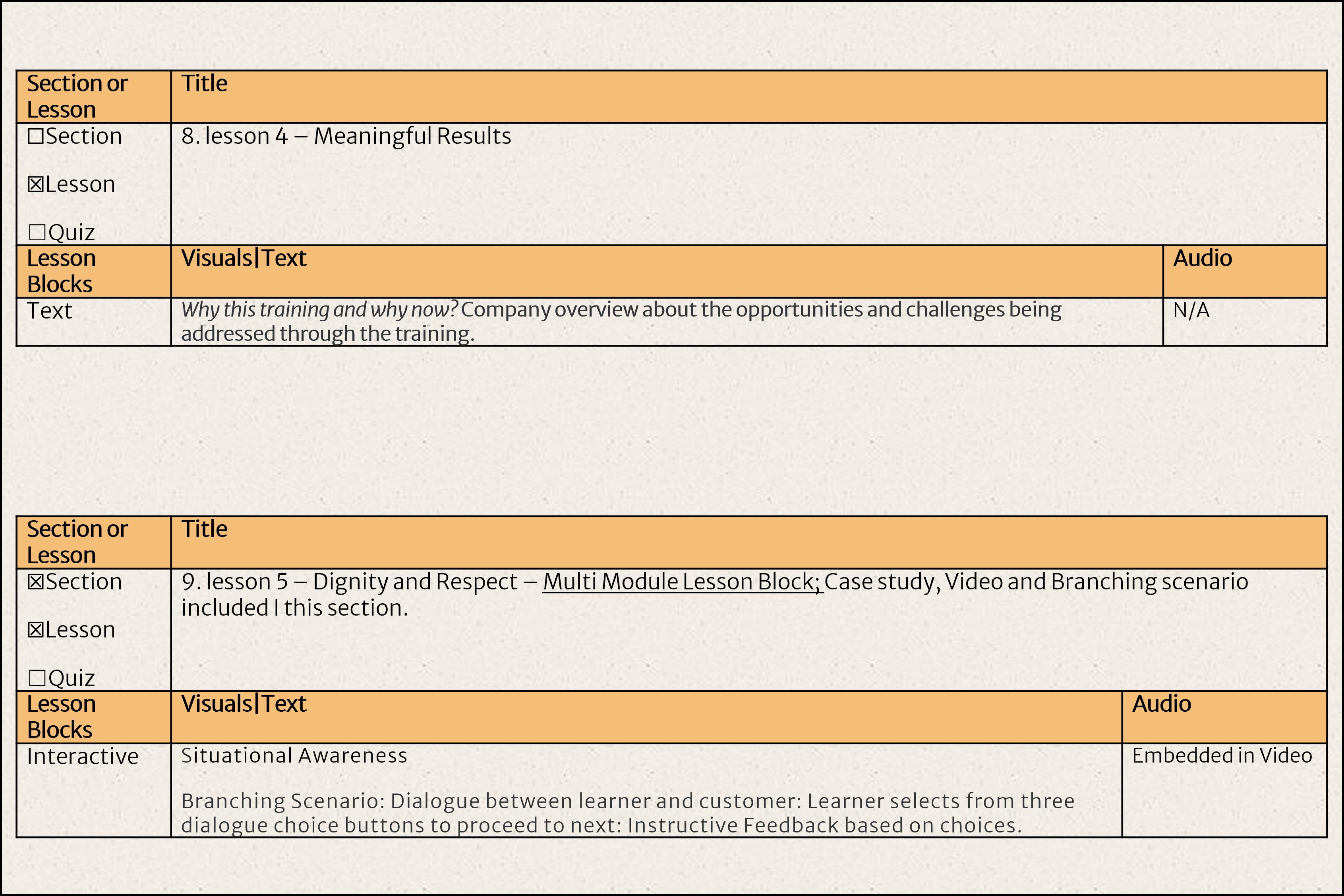
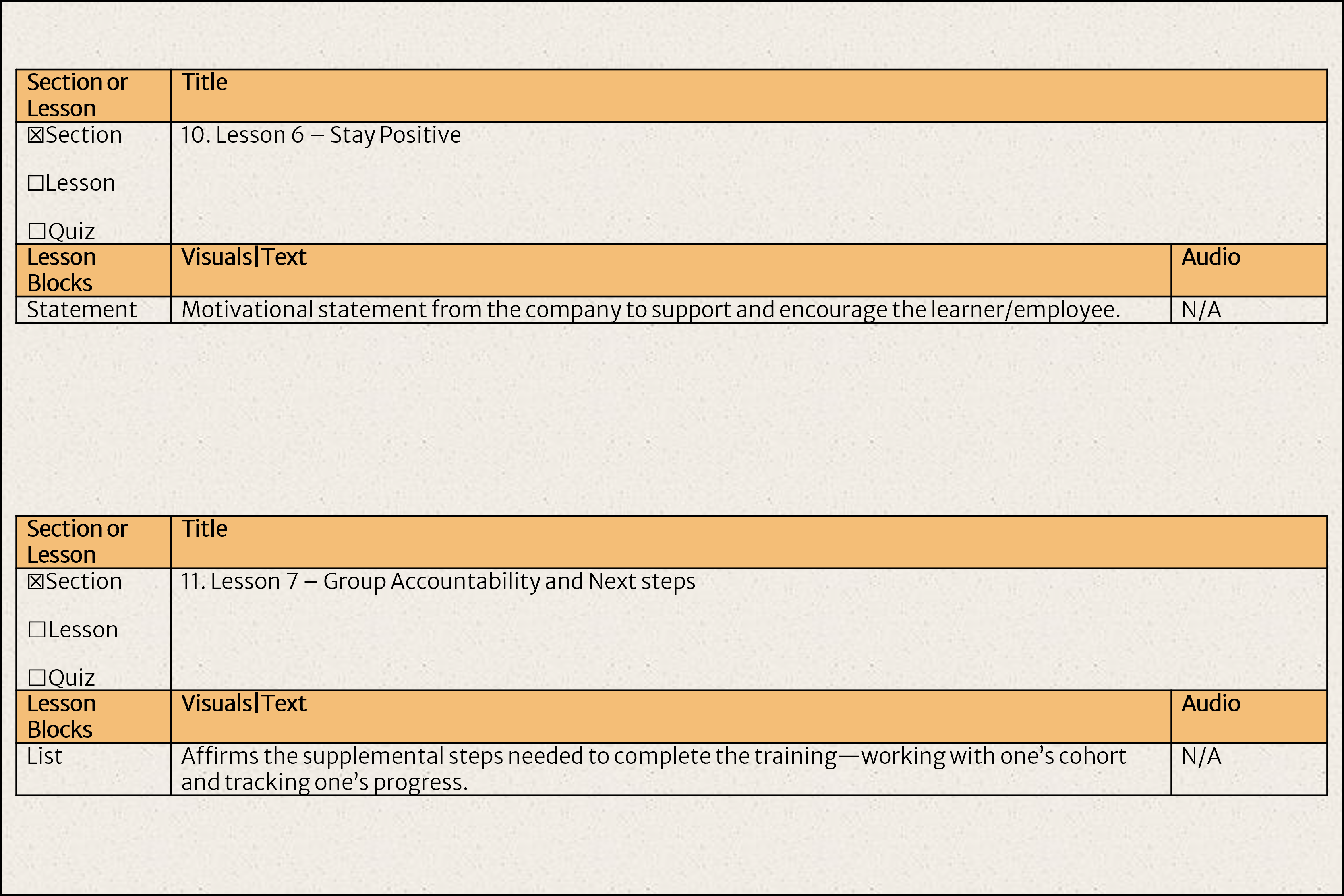
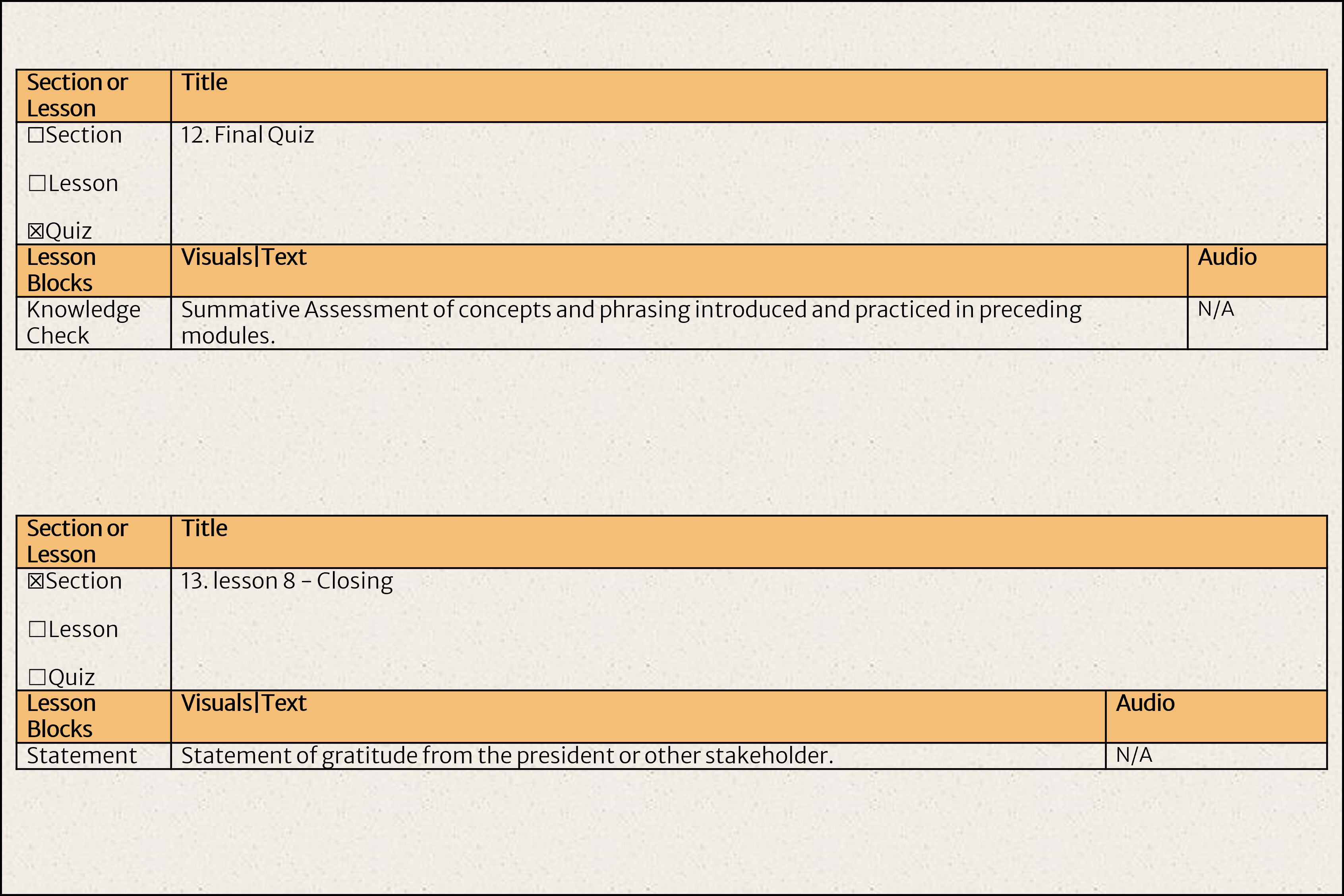
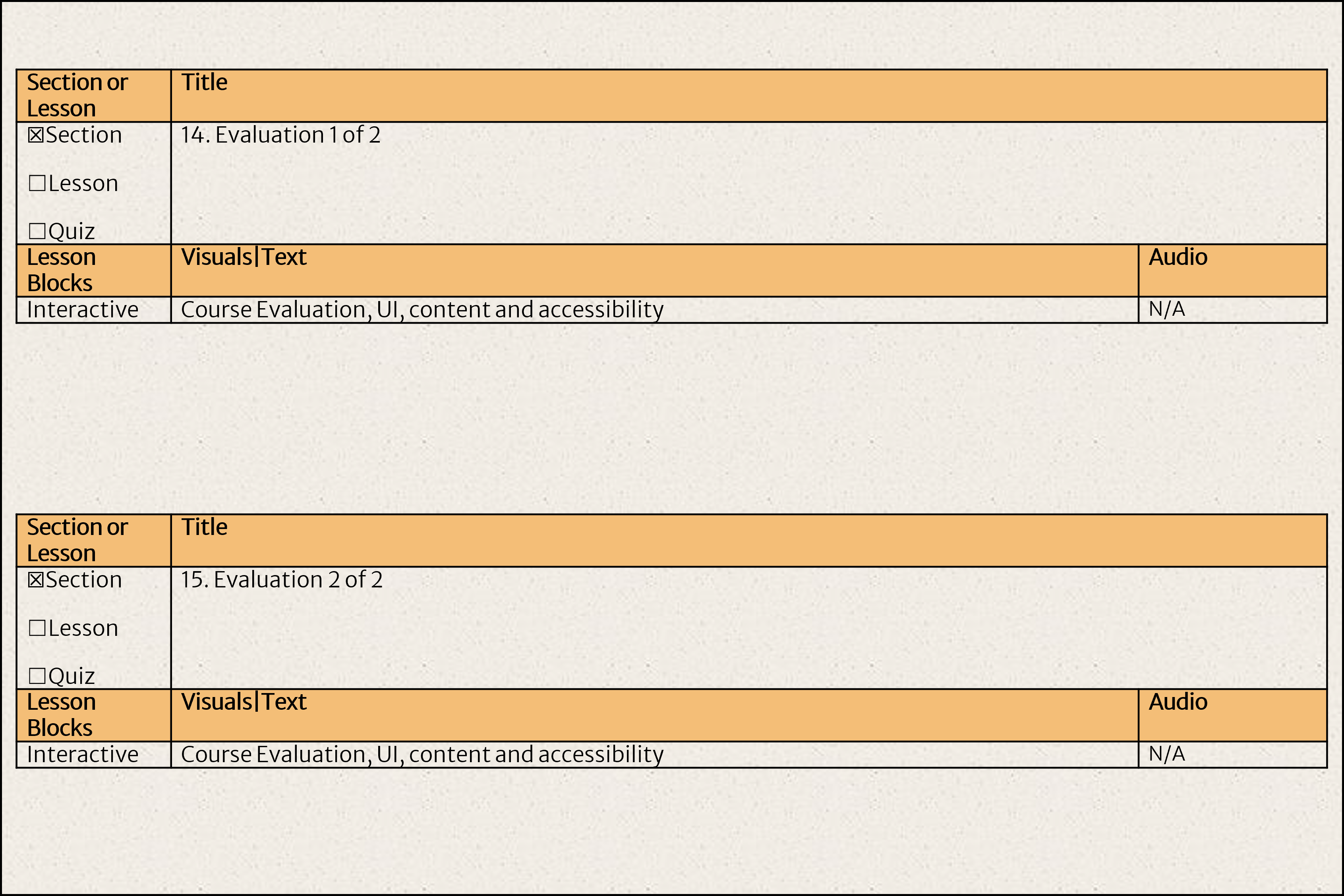

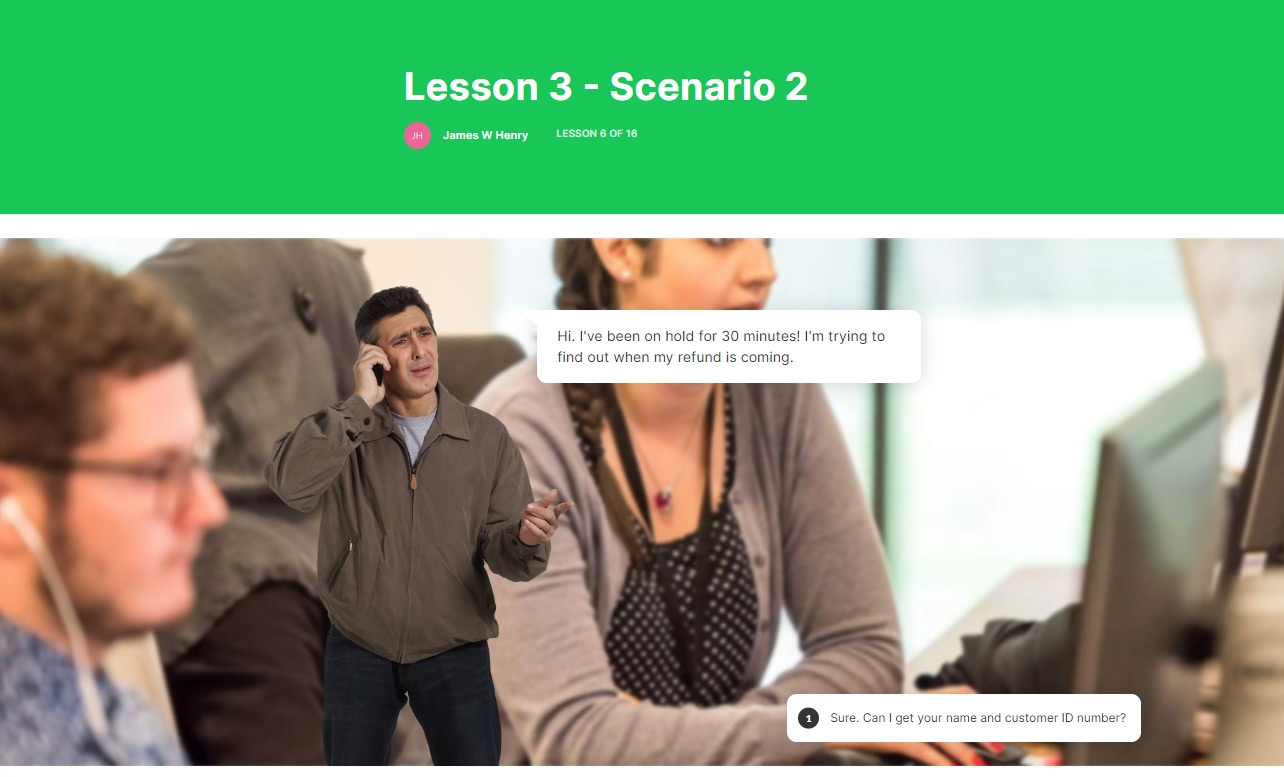

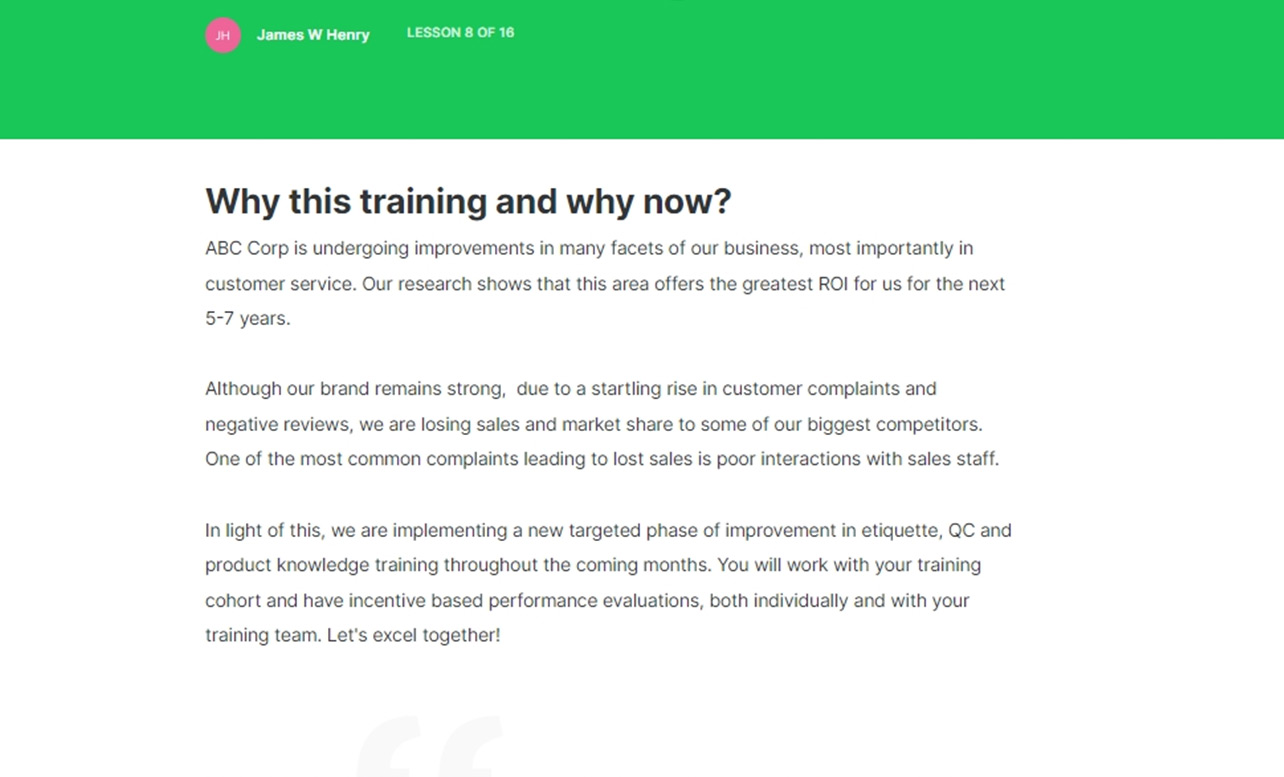

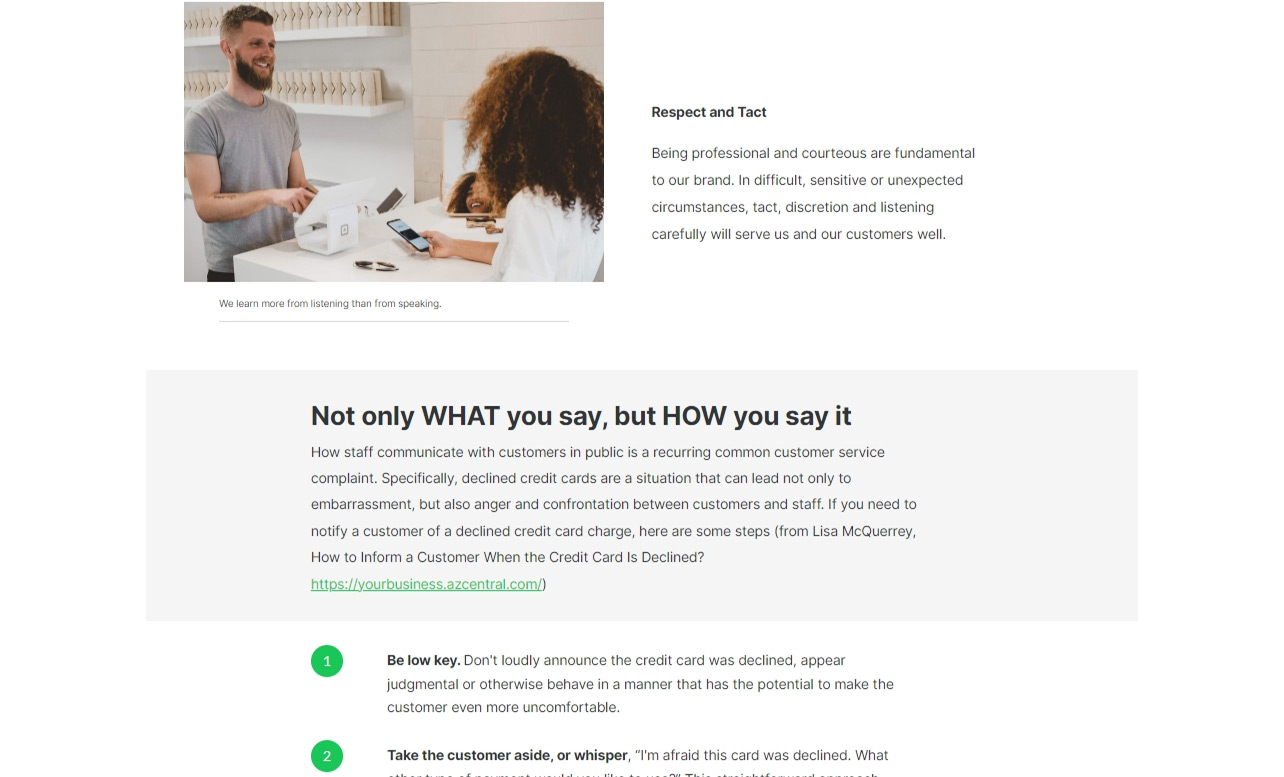
Outcomes
Six months post-training, analysis was done on four data points:
A. Change in customer complaints (individual)
B. Change in customer positive ratings (individual)
C. Change in group sales figures (region)
D. Change in relative ranking between XYZ and ABC in CS Magazine’s quarterly rankings (nationwide)
Results Summary
A. 88% of learners showed a significant reduction in customer complaints, averaging a 43.3% reduction. 10% showed no change, and 2% had no data.
B. 63% of learners showed an increase in positive feedback ratings, with an average increase of 17%. 36% showed no significant change, and 1% had no data.
C. Regional sales figures showed an 8.5% monthly and 11% quarterly increase, correlating with improved customer service feedback.
D. ABC Corp surpassed XYZ for the first time in “customer empathy” and “customer problem-solving” categories in CS Magazine’s quarterly rankings. This is the first time in ABC’s history to achieve such a mark.
Kirkpatrick Model Evaluation
Level 1: Reaction – 95% of participants reported high satisfaction with the training, highlighting the practical relevance and engaging scenarios. Feedback specifically praised the interactive elements, the applicability of the content to their daily roles, and the incentive system that rewarded active participation and performance improvements.
Level 2: Learning – Post-training assessments showed a 90% average score, indicating a strong grasp of customer service principles and scenarios. Participants demonstrated significant improvement in their ability to handle challenging customer interactions, as evidenced by their assessment scores and self-reported confidence levels. The collaborative and social learning aspects, such as peer discussions and group activities, significantly enhanced knowledge retention and engagement.
Level 3: Behavior – Observations and feedback from supervisors noted 85% of participants consistently applying learned techniques in real customer interactions. This was particularly evident in their improved communication skills and ability to resolve issues effectively, resulting in higher customer satisfaction scores. The incentive system and the collaborative environment were crucial in motivating behavior change and sustained application of skills.
Level 4: Results – The organization saw a 15% overall increase in customer satisfaction and a 10% boost in sales, aligning with the reduction in complaints and improved positive ratings. Additionally, ABC Corp surpassed XYZ for the first time in “customer empathy” and “customer problem-solving” categories in CS Magazine’s quarterly rankings, marking a historic achievement for ABC Corp. The training’s success was driven by its comprehensive design, including incentives and a strong emphasis on social learning, which fostered a supportive and motivating learning environment.
Takeaways
Although this is a concept course, the idea and the topic have been with me for a long time. An American who has lived and worked in Japan for a number of years, I have lived firsthand the wide disparity between customer service as it’s delivered in Japan (pretty much amazing) and in the U.S. (hit-and-miss to be generous).
I’ve always been bewildered by how stores in Japan are so religiously focused on customer satisfaction, comfort, and convenience in almost any kind of environment you could imagine.
In convenience stores, employees trot up to the counter if more than two customers are waiting in line. They have almost no tolerance for upsetting the customer, much less being rude to them.
Contrast this to the epic tensions, snark, disrespect, or just neglect between staff and customers in too many environments in the U.S., and even as a customer I wanted the U.S. to do better.
I always thought the potential is there for U.S. companies to start delivering the type of customer service in the movies or back in the old days before things became so contentious in too many public spaces. So the idea for this course comes from a hope that American companies can do better for their customers. Many, in fact, seem to be getting the message.
I hope a course like this will be part of the solution, for the benefit of companies’ bottom lines and customers as well.